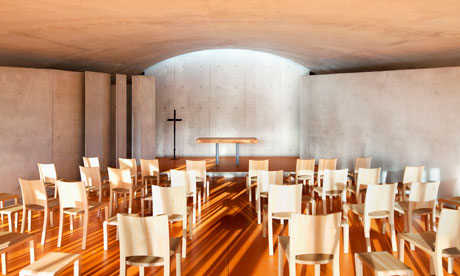
Below is a sermon preached to a congregation December 4, 2011. Usually, I don't publish sermons, but this had enough commentary on society's embrace of subjective stories that I thought it would work in this medium as well. The picture is actually from a congregation, New Life Church in Colorado Springs, CO.
It seems that nothing is complete today without someone adding their personal story to it. Nothing has any value at all unless someone’s story accompanies it to give it that personal touch, a story that brings an event or an occasion down the personal level. So prevalent is the demand for personal stories, I am starting to see this demand as a kind of tyranny, a fruit of our relativistic age that tells us that nothing has intrinsic value unless someone feels that it has value.
I was watching a competitive cooking show the other day, and the challenge was not only to cook a great dish, but to connect the dish to a story. The chefs, who are masters of their trade, were judged on their ability to connect a story to their dish as much as the dish itself. This wasn’t the first time I’ve noticed this. Indeed, the Food Network is constantly coaching its talent to partner their life story with their food. Somehow, they believe that if we know a TV cook learned a lasagna recipe sitting at the feet of Aunt Maria during summer vacations to Naples, the food will taste better.
Maybe it will. But in the end, the food should speak for itself. I don’t care what long-lost relative concocted the recipe…I just want to know if it’s tasty or not. So interested are we in the personal story, though, that the media demands the personal touch. News reporting is no better. An event is reported on, then a microphone is placed in the face of a bystander and they’re asked how they feel about the event.
And yet, perhaps no institution has become as corrupted by the tyranny of the story as the church. Starting as an American phenomenon in the mid-1800s, the testimonial came to be the way the Church validated its ministry. After all, what good is the Gospel or the Bible or even the Law if human beings don’t experience a changed life and live to tell the tale? The testimonial became the personal story that proved the good news of Jesus to be true. Never mind that the faith had been preserved for almost two millennia on the facts of Jesus’ ministry, death, resurrection and ascension. No, in America, we also had to have personal stories validate Jesus, or else, the Church would just be seen as another tired institution with nothing new or interesting to say.
Now I’m not saying that stories are bad! Stories are wonderful, they are truly the language of the human race. Stories help us make sense of the world, they entertain us, and they separate us from every other of God’s creatures. God has gifted us with the ability to tell stories, and that is a good thing. But stories have their limits, and in our narcissistic time and place, they can easily become a cheap substitute for the truth. The demand for stories to validate the truth cripples the church’s proclamation of the Gospel, because instead of proclaiming what is, we end up arguing who has the better story: you or the atheist, you or the secularist, you or the naturalist, you or the Buddhist.
That’s the difference between news and a story. News happens, whether we like it or not. News is not particularly personal, and news is equally true for all people. Stories are personal, and they may be true or false. News is objective; how we feel about it can’t make it untrue. Stories are often subjective, and they are often intended to change the way we feel.
We need to appreciate the difference between news and stories, so we can fully appreciate what Mark is saying the first sentence of his gospel. He writes, “The beginning of the good news of Jesus Christ, the Son of God.” The Gospel, according to Mark is not a story, but news of an event. The stories found in Mark or any other gospel reveal the Gospel. It is not the purpose of the Gospel to reveal a story.
The word Gospel actually derives from the Old English words, “good spell” or “glad tidings.” These are both literal translations from the Greek Word euangelion, from which we get also get the words “evangel” or “evangelism.” The Greek understanding of euangelion was good news, mostly in the wake of military battles. If a general or a king arrived home after being away in battle with euangelion, that meant the enemy had been defeated.
So when Mark begins his gospel by saying, “The beginning of the euangelion of Jesus Christ,” he is not only using military language, he is declaring victory from the outset. And he is saying that it is true, it is done, and we live in the wake of the news. It’s like hearing a paper boy on the street on August 15, 1945, when victory in World War II had become official. You hear the news, you rejoice, and you can’t change the news or lessen it. You can’t become the news or live the news. You can only hear it, rejoice in it, and retell it. The same is true of the Gospel of Jesus Christ. You can’t “live the Gospel or “be the Gospel”. It simply is. You can only hear it, rejoice in it, and retell it.
What Jesus Christ did on the cross, when he bore the sins of the world, and died, and was buried only to be raised from the dead…that’s good news. Too much teaching and preaching today is built around trying to connect that news to our personal stories. But that is a trap. What happens when our stories don’t turn out so well? What happens when we can’t live up to the standard of perfection that God’s demands?
Our personal stories, far from being heroic, are usually shameful or embarrassing. We selfishly act in our own interests instead of the interests of others. We idolize other men and women. We encourage and participate in a culture that is obsessed with sexuality and the superficial. We love to tell stories about ourselves that place us in a great light. But the truth is that the stories we don’t tell usually are not very impressive. Indeed, they are convicting of our constant falling short of God’s standards.
But the good news of Jesus Christ, that news is good, no matter the shortcomings of our own stories. And that is truly what makes it good! God intervened in our lives, not to partner in our own amazing stories, but to save us from our sins. While we are trying to figure out where our story fits into God’s story, Mark comes to us with news that transcends our stories, surpasses our stories, and exceeds our stories.
And that news is that in the person of Jesus Christ, God has come to you in the flesh. He has died for your sins. And he has been raised from the dead. And in your baptisms, your sin has been defeated, and you are given the promise that you too will be raised from the dead. The good news is true: Christ is the victorious king with euangelion, the savior who has won for you the war against sin, death and the devil. Amen.










